A Day in the Life of a Great Cats Keeper
Training tigers to show their teeth and preening prickly porcupines is all in a day’s work for keeper Dell Guglielmo! As a member of the Great Cats animal care team, she works with everything from apex predators to laid-back rodents. Follow a day in the life of a keeper!
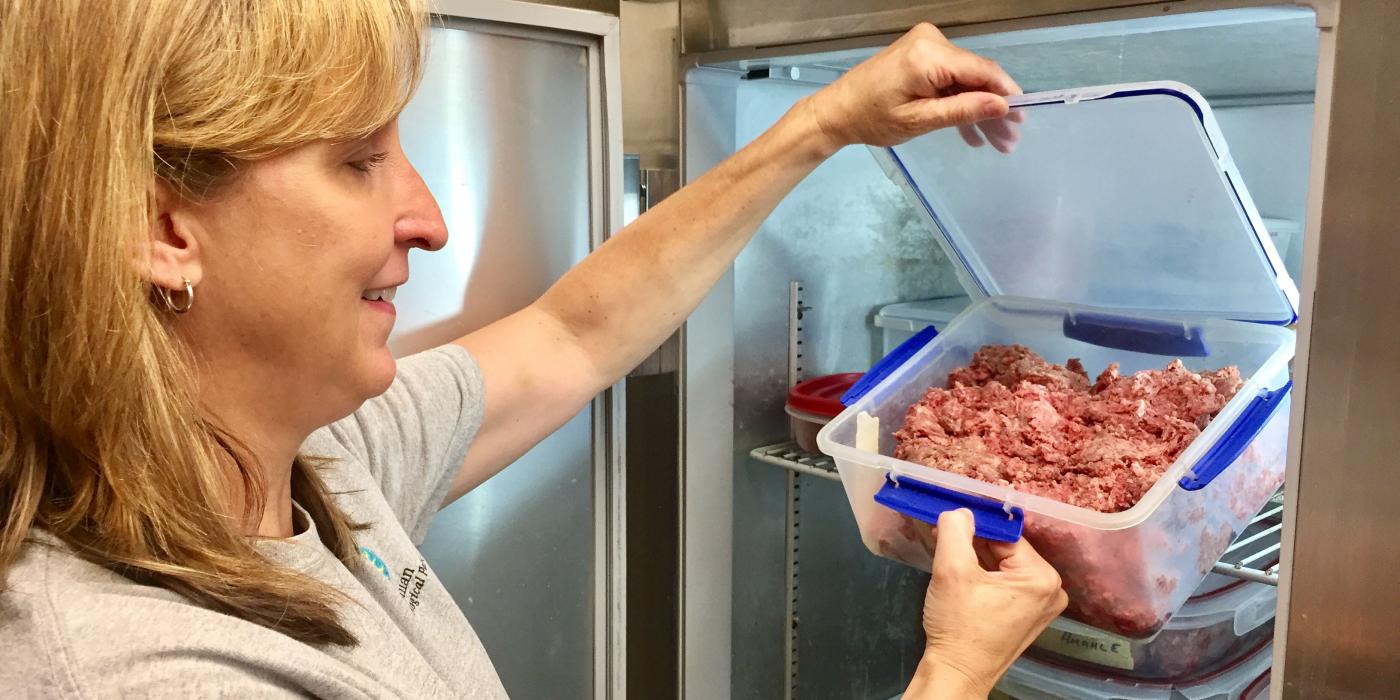
“Our Department of Nutrition Sciences delivers a commercial carnivore diet to the Great Cats team daily, and we prepare the diets. The diet looks like hamburger meat but is designed to meet the nutritional needs of carnivores. In addition to ground beef, we also feed the cats beef chunks (mini filets), bones (femurs or knuckles) as well as frozen-thawed rabbits to ensure their diet is nutritionally complete. Each cat receives an amount relative to his or her body weight.”—Dell Guglielmo, animal keeper
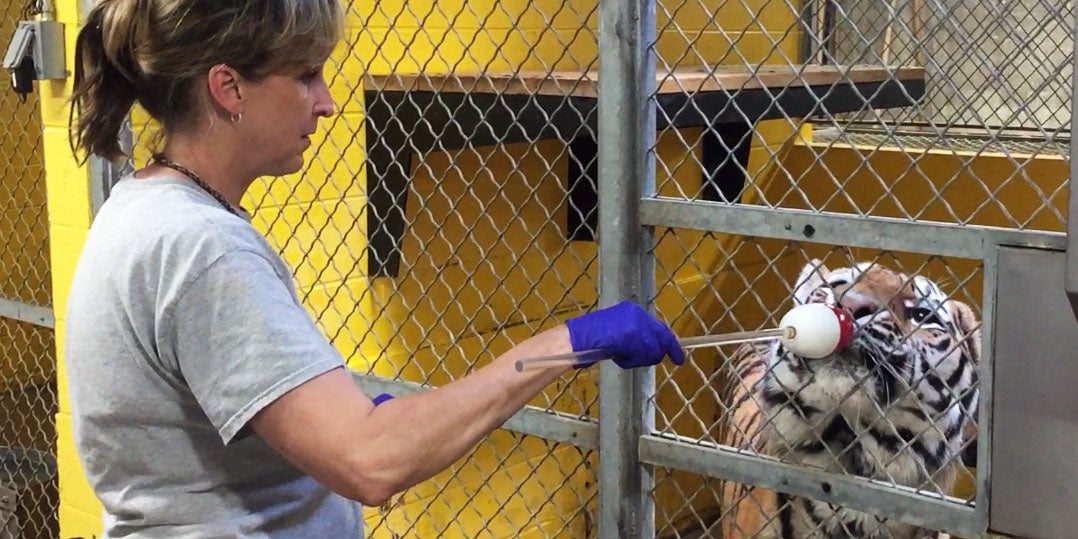
8 a.m. l Tiger Training
“When training a tiger, you can’t start off by saying ‘sit’ and expect them to sit. Training is about teaching a basic behavior and building upon that behavior. Training 101 involves asking an animal—in this photo our Amur tiger, Pavel—to pay attention to the target buoy. If he does, I will signal that he has done the correct behavior by blowing my whistle—known as a “bridge”—so he knows his beef chunk reward is coming. Once he has mastered that behavior, I can ask him to lay down, stand up, and put his paws on the mesh—all by following the target.
“Because tigers are large carnivores and we cannot go in with them, we need to train them so we can look at their teeth, their eyes, under their belly and the bottom of their feet. We are looking for any areas that may need veterinary attention. We train our cats using positive reinforcement training. Participation is voluntary, and they are rewarded if they do the behavior asked of them. The goal is for them to have a positive association of us (their keepers) so that we can build their trust and best care for them.” —Dell Guglielmo, animal keeper
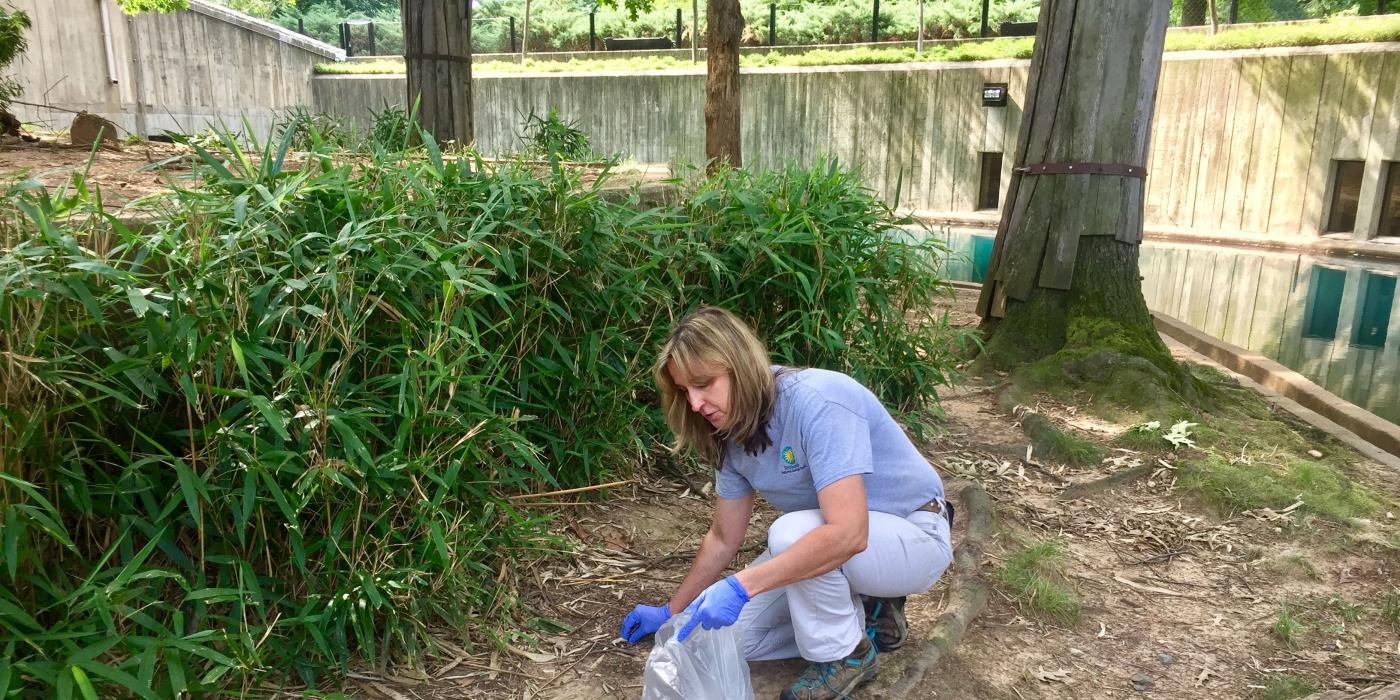
9 a.m. l Scat Science
“Although we train our lions and tigers to voluntarily participate in blood draws, we can also monitor their health and hormones just by studying their poop. With six African lions, a Sumatran tiger and an Amur tiger, we need to be able to tell whose poop is whose. Every day, we add a fecal marker—glitter—into their food. Damai, for example, gets silver glitter. That helps us identify her sample before we send it to our endocrine lab for analysis.”—Dell Guglielmo, animal keeper
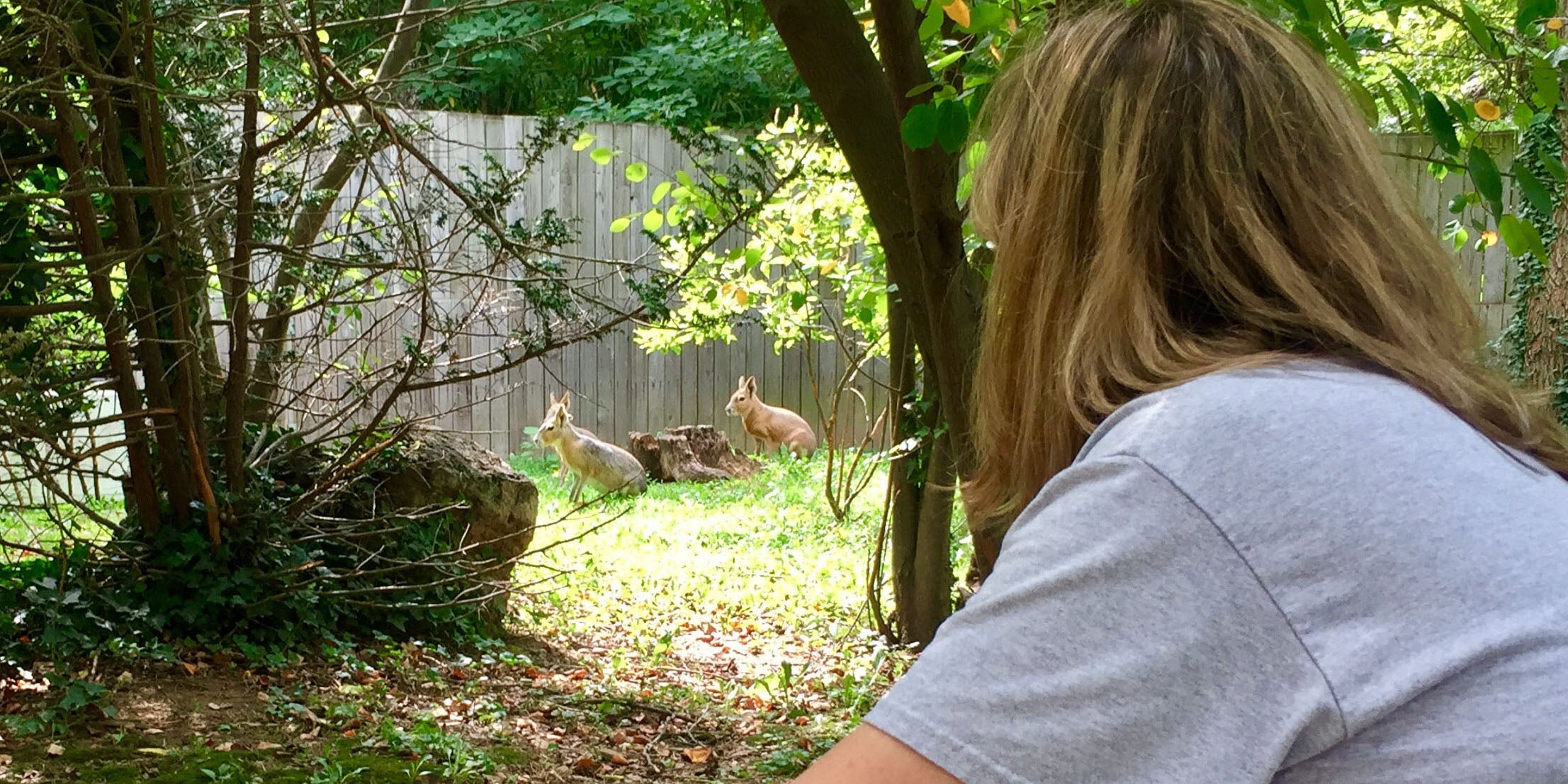
11 a.m. l Mara Monitoring
“Some of the animals that we care for, like these Patagonian maras, tend to be skittish around people. Every morning, we do a visual assessment to make sure everyone is accounted for and no injuries occurred overnight. We also want to make sure they are maintaining a healthy weight. They don’t seem to like foods that are sugary or sweet; they eat squash, zucchini, corn, carrots and sweet potatoes. Every morning we feed them a mixture of rodent pellets and root vegetables. By placing their diets on the scale, the maras willingly hop on it, and we can monitor their weights.” —Dell Guglielmo, animal keeper

1 p.m. l Porcupine Feeding Time
“Our male North American porcupine has a tendency to not only eat his diet but also the diet of his female companion. In order to ensure that no one is eating too much or two little, we feed them separately. Each day the Department of Nutrition Sciences gives them four or five different foods; these include a mix of acorn squash, sweet potato, corn on the cob and yellow squash. We will hand feed each porcupine his or her leaf-eater biscuits; it is a good opportunity for us to get a good look at their teeth and ensure they are healthy. Porcupines are part of the rodent family, so their upper and lower incisors are constantly growing.” —Dell Guglielmo, animal keeper
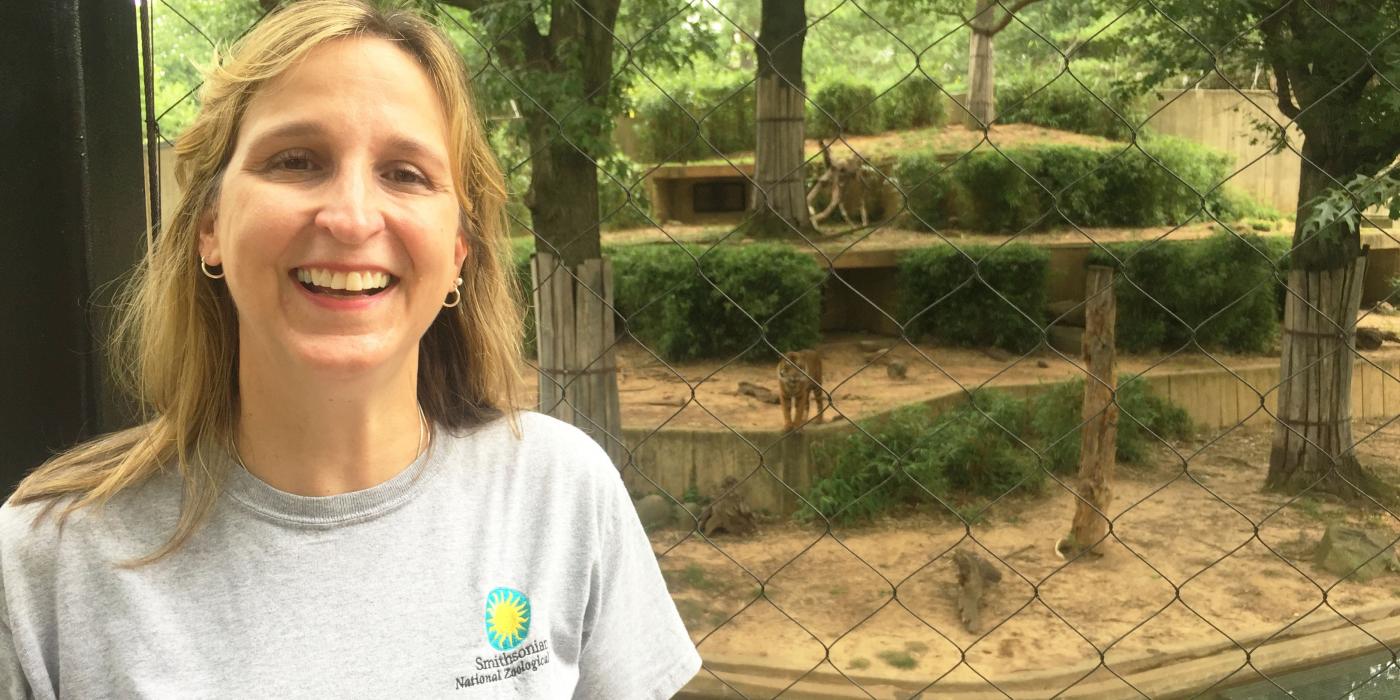
1:30 p.m. l Meet a Keeper Talk
“The best way for visitors to learn some cool facts about lions and tigers and get to know their stories is to attend our daily keeper talks. It is also a great opportunity to see the cats being active; we usually toss them a bone treat. Stop by any day at 9 a.m. or 1:30 p.m. to chat with us!”—Dell Guglielmo, animal keeper
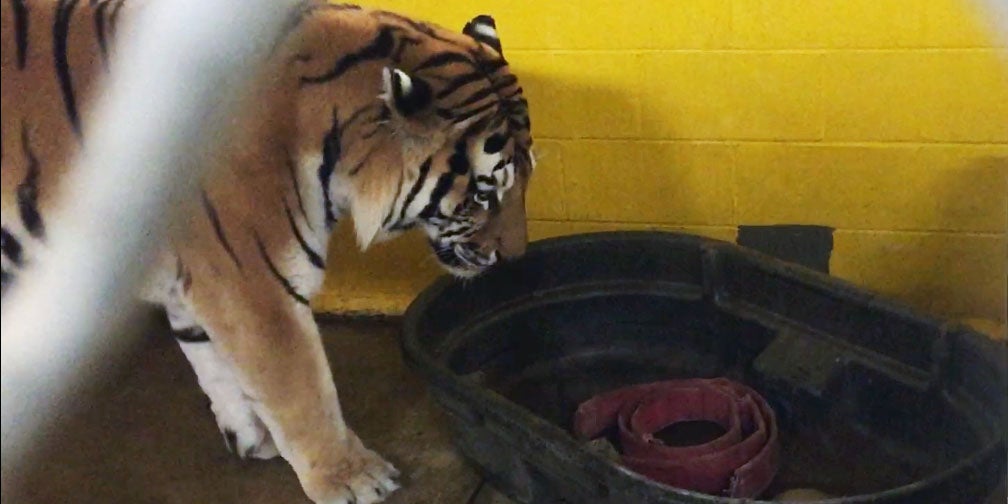
2 p.m. l Tiger in a Tub
“We like to give our lions and tigers interesting and novel things that they are not used to seeing—or smelling—every day. We have more than 25 spices in stock, from peppermint, clove and cinnamon to cayenne, basil and beef bouillon.
“Today, I am sprinkling some clove and peppermint (which is in the catnip family) into a tub with some other enrichment items, a boomer ball and a fire hose. Cats are very curious animals. Pavel tends to approach new items cautiously. Once he realized they were not a threat, he began to sniff and inspect the tub. He appeared to enjoy the smell and rubbed his head on the tub to anoint himself with the scent.
“Scent enrichment also encourages our cats to use a natural behavior called the Flehmen response; they run a scent across the Jacobson organ (olfactory sensor) to get a more intense smell of a substance. Males typically use this behavior in the wild when they are hunting or searching for a mate. Pavel doesn’t appear to have a favorite spice. He seems to be interested in all smells equally!”—Dell Guglielmo, animal keeper
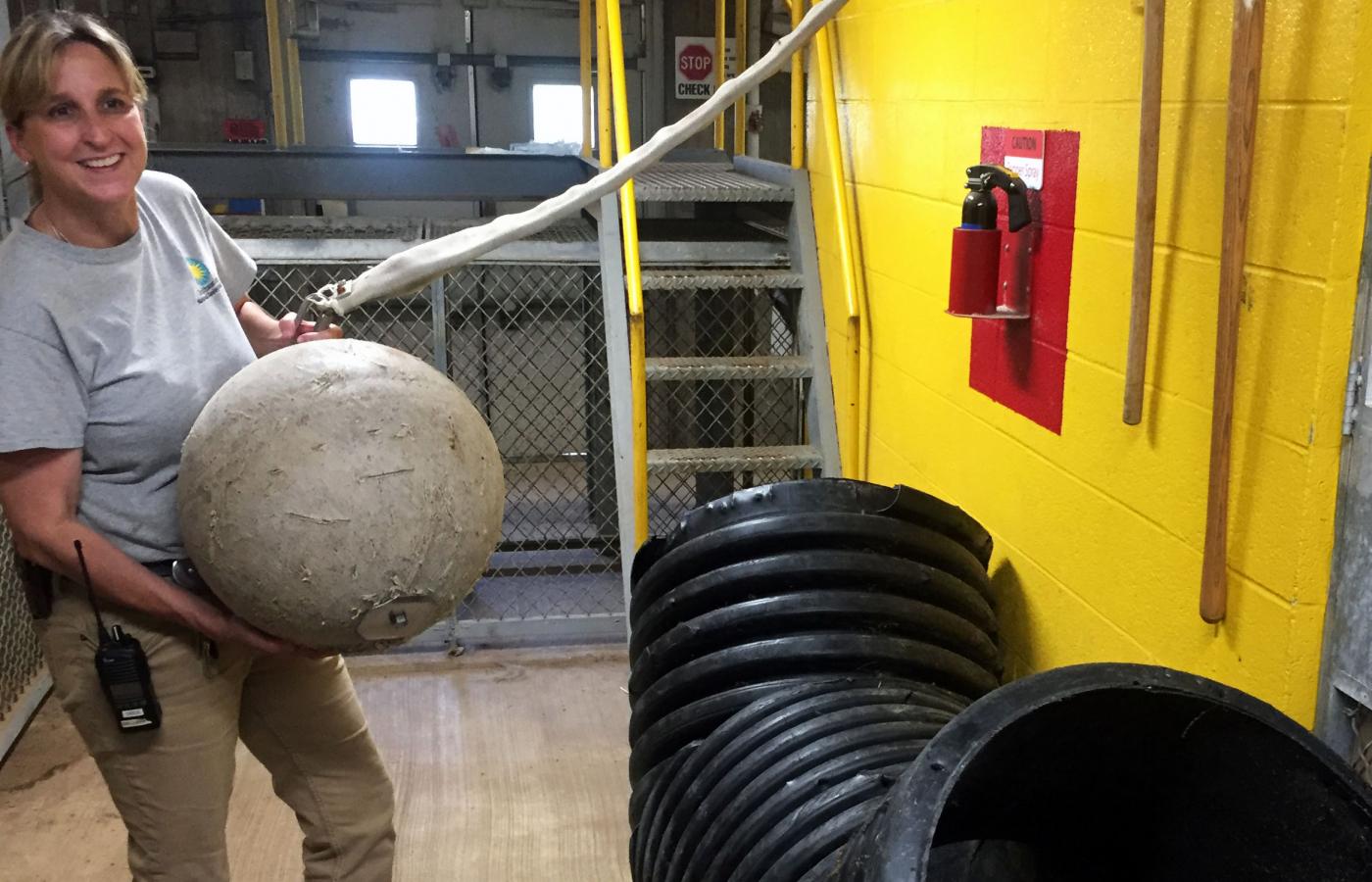
3 p.m. Afternoon Enrichment
“In addition to scents, the tigers have a variety of toys that mimic prey and encourage the cats to use their stalking and hunting behaviors. We attach this boomer ball and fire hose to a bench in the moat. Unlike almost all other cat species, tigers don’t mind taking a dip in the water, especially on a hot summer day. In fact, we usually place this accordion tube in the yard, only to have Pavel drag it into the water. It is designed to float. but when filled with water it weighs more than 100 pounds. Still, Pavel can carry it around the yard with no trouble.” —Dell Guglielmo, animal keeper
This story appears in the July 2018 issue of National Zoo News. Learn more about the Zoo’s animal enrichment and training program.
